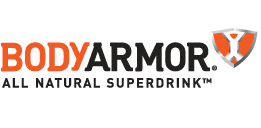1. FAILING TO REALISTICALLY BUDGET. Some companies fail to allocate an appropriate and realistic budget to support all the needs of a robust brand protection program. This is one of the biggest mistakes that even well established, sophisticated companies make. A typical marketing department will comfortably spend millions of dollars a year placing glossy advertisements in Vogue that will attract a customer’s attention for a millisecond as she flips the pages. But that same company will spend a fraction of that budget to take down dozens of high-profile counterfeit websites that show up in a search engine's top results for the brand, even when those websites will confuse thousands of customers and measurably hurt sales.
2. RELYING SOLELY ON THE GOVERNMENT. Another mistake that some brand owners make is assuming that law enforcement personnel and Customs agents are familiar with their brands when they encounter counterfeits of their products during a raid or investigation. The truth is that well-intentioned police officers and Customs agents can only seize and detain items that they have a reasonable suspicion is fake. A brand owner cannot assume that the Customs officer looking through a cargo ship at a major port knows how to tell a real pair of sunglasses from a counterfeit. That is why it is so important to reach out to law enforcement and develop ongoing relationships. Train them to detect the differences between real and fake products of your brand.
 3. PRIORITIZING INCORRECTLY. It is important to prioritize targets based on a variety of factors including size, but it can be a mistake to place seemingly “low-level” targets on the back burner for too long. In fact, some of the largest counterfeiting and smuggling rings can be uncovered by pursuing a seemingly small target, such as a storefront or street peddler. Sometimes, these sources will reveal a treasure trove of information about their counterfeit supply chain that can lead to significant seizures of counterfeit goods.
3. PRIORITIZING INCORRECTLY. It is important to prioritize targets based on a variety of factors including size, but it can be a mistake to place seemingly “low-level” targets on the back burner for too long. In fact, some of the largest counterfeiting and smuggling rings can be uncovered by pursuing a seemingly small target, such as a storefront or street peddler. Sometimes, these sources will reveal a treasure trove of information about their counterfeit supply chain that can lead to significant seizures of counterfeit goods.
4. GOING IT ALONE.
Another mistake some brands make is to go it alone, and try to take on the entire counterfeit industry in isolation. But savvy counterfeiters deliberately rip off dozens of brands in order to diversify and spread their risk, and also focus on what sells best in any given season. Therefore, it doesn’t make much sense for brands to refuse to partner and share information with other brand owners, who are also victims in this struggle.
5. GIVING UP
ENTIRELY. The absolutely worst mistake a company can make is to give up entirely and abandon their brand to the vicissitudes of the counterfeiters' marketplace. Brand protection efforts require a long-term
strategy, and while it sometimes feels like bailing out the ocean with a spoon, it is critical to stay the course.



















